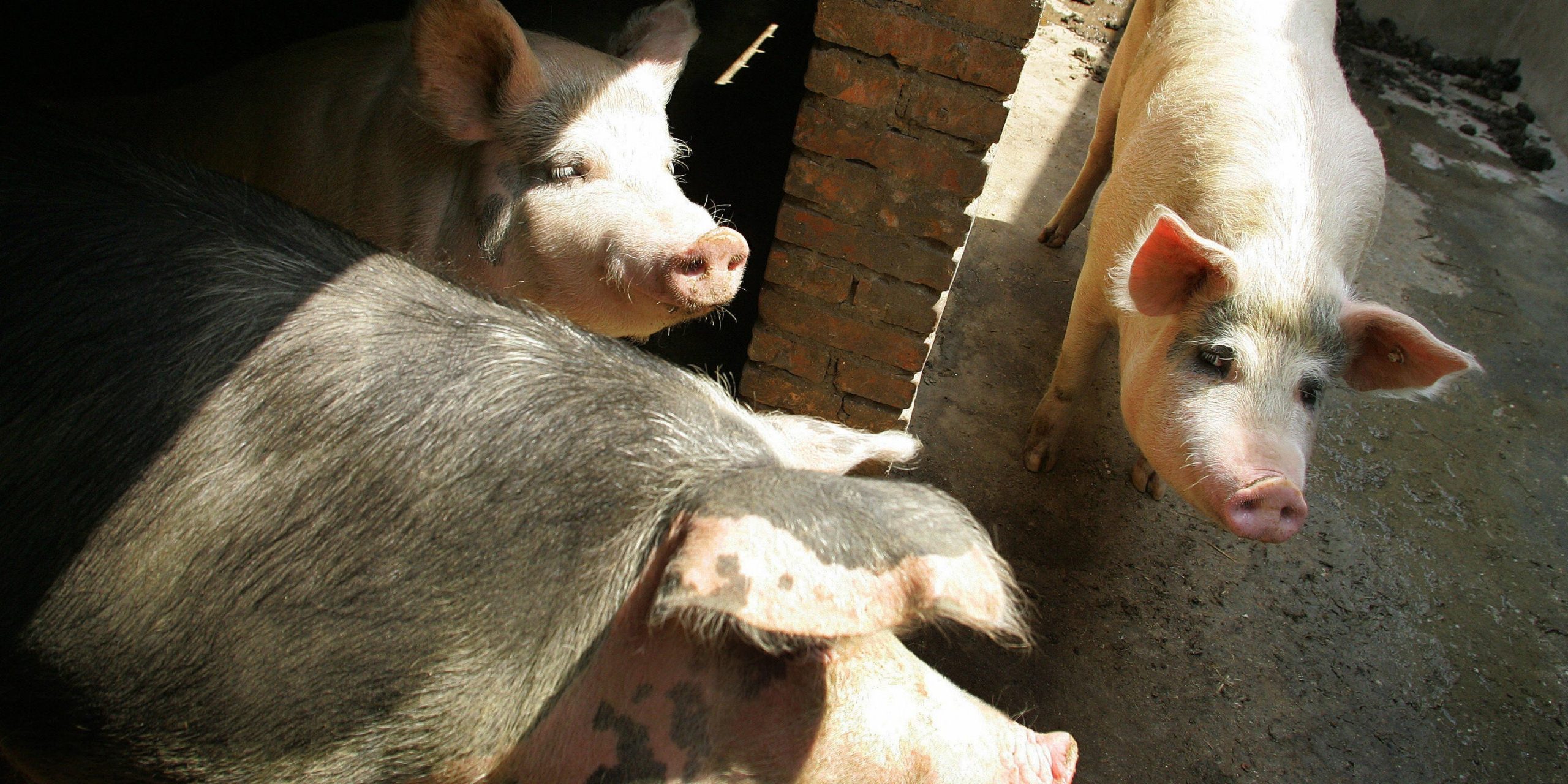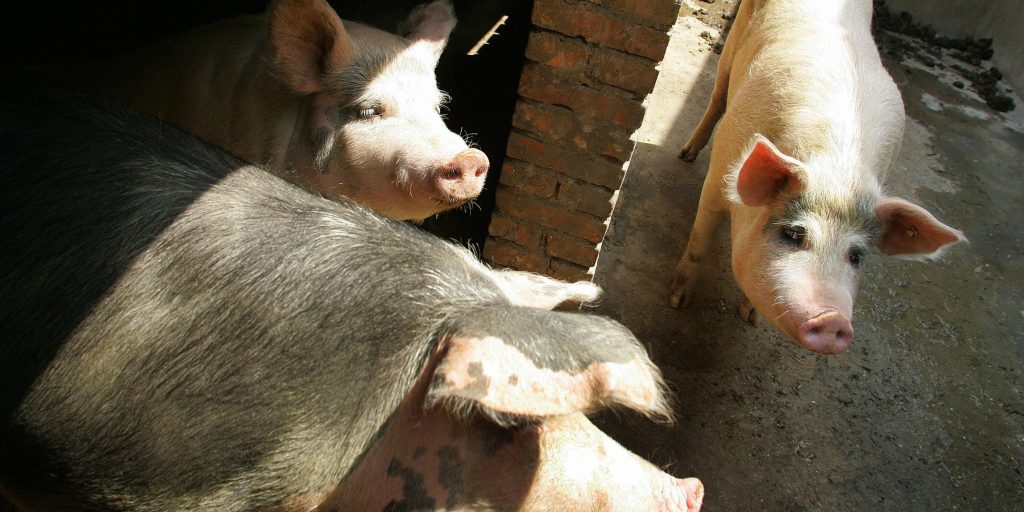
FREDERIC J. BROWN/AFP via Getty Images
- Hog prices have fallen 14% after a wild run-up over the past year.
- China's agriculture ministry said hog herds reached 98.4% of 2017 levels, before African swine fever ravaged the pig population.
- A full rebound hadn't been expected until 2023, and the good news has triggered panic selling.
- Sign up here for our daily newsletter, 10 Things Before the Opening Bell.
Hog futures contracts have fallen 14% in June as China's herds recover from a 2018 outbreak of African swine fever more quickly than expected, according to the Wall Street Journal.
Cooling hog prices come after a wild run-up over the past year. Between April 2020 and this month's highs, futures contracts surged 183%. Consumers have begun to feel the pinch, with pork prices at US grocery stores rising 5.4% year-on-year in May, according to NielsenIQ.
Earlier this month, the agriculture ministry said hog herds grew 23.5% in May year-on-year, reaching 98.4% of 2017 stocks. The swine fever outbreak ravaged China's pig population, 40% of which died off or were culled in 2019. The country produces half the world's pork.
As more supply has come online, Chinese domestic hog prices have fallen precipitously, in part because the pork bounceback has come ahead of schedule, according to the Journal. A full rebound hadn't been expected until 2023, and the good news has triggered panic selling.
The Journal report threw some cold water on the reliability of Chinese data, quoting a trader who advised watching hog farmers' behavior – such as grain imports used for hog feed – rather than government numbers.
China has long grappled with inaccurate data reporting, sometimes owing to falsification by local officials polishing up their records.
